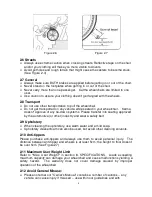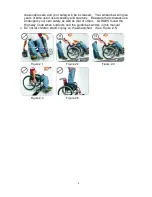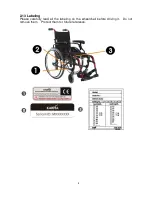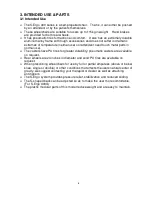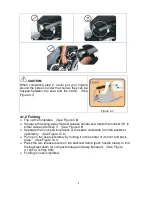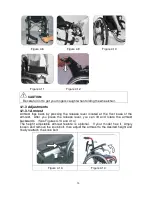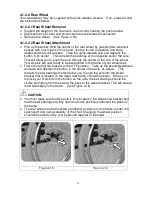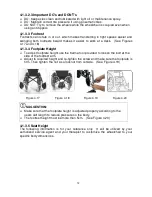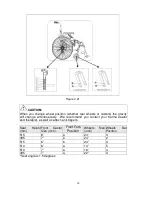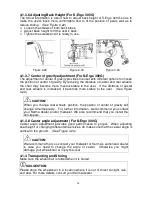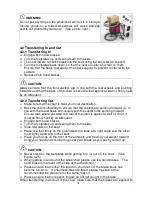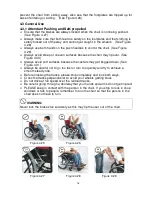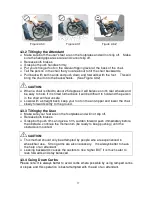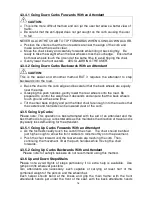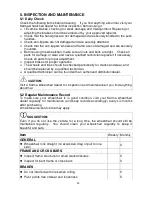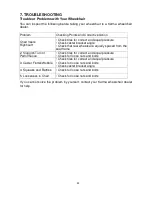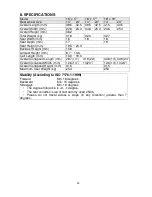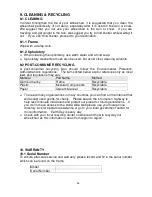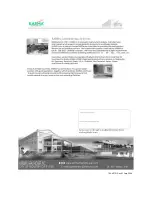
17
Figure 4.30
Figure 4.31
Figure 4.32
4.3.2 Tilting by the Attendant
Make sure both the user's feet are on the footplates and will not slip off. Make
sure the handgrips are secure and cannot slip off.
Release both brakes.
Grasp both push handles firmly.
Put your stronger foot on the relevant tipping lever at the back of the chair.
Tell the person in the chair that you are about to tilt the chair backwards.
Pull back with both hands and push down and forwards with the foot. This will
bring the chair onto the back wheels. (See Figure 4.32)
CAUTION:
When a chair is tilted to about 25 degrees it will balance on it's rear wheels and
be easy to hold. If it is tilted further back it will be difficult to hold and the person
in the chair will feel unsafe.
Lower with a straight back; keep your foot on the anti-tipper and lower the chair
slowly forwards softly to the ground.
4.3.3 Tilting by the User
Make sure your feet are on the footplates and will not slip off.
Release both brakes.
Grasp both push rims and give a firm, sudden forward push immediately before
the obstacle, continue the momentum (be ready to keep pushing) until the
obstacle is mounted.
CAUTION:
This method should only be attempted by people who are experienced in
wheelchair use. Strong arms are also necessary. It is always better to have
the help of an attendant.
Leaning backwards causes the casters to rise higher BUT it is much safer to
lean forwards and stay balanced.
4.3.4 Going Down Curbs
Please note: It is always better to avoid curbs where possible by using ramped curbs
or slopes and this operation is best attempted with the aid of an attendant.
Summary of Contents for S-Ergo 300 Series
Page 1: ...S Ergo 300 series S Ergo 300G KM 3020 2 S Ergo 305 KM 3520 2...
Page 2: ......
Page 34: ......
Page 35: ...104 40101 Rev 01 Sep 2008...

